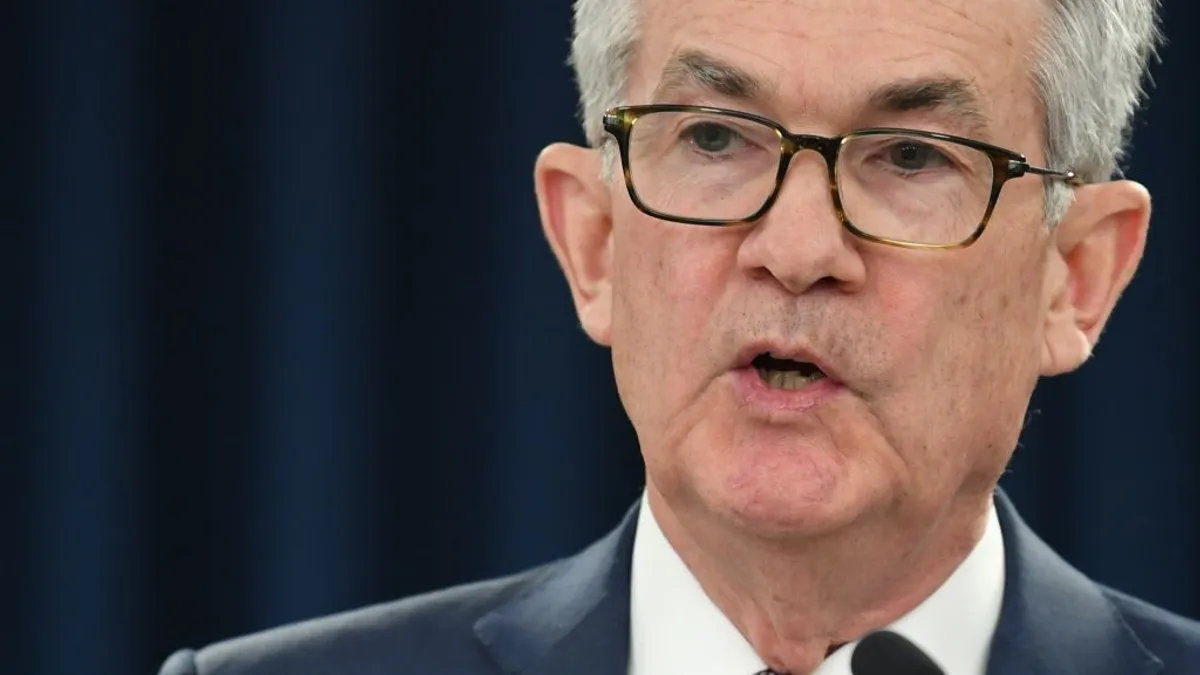Dive Brief:
- Federal Reserve Chair Jerome Powell predicted Wednesday that losses in the commercial real estate market will mostly harm small- and medium-size banks and cautioned that efforts to ensure stability will need to persist for many years.
- “There will be losses by some banks,” Powell said in testimony to the House Financial Services Committee. “It’s really medium- and small-size banks that have these higher concentrations” of troubled loans, he said, adding “it’s going to be a problem we’ll be working through, I think, for several years.”
- “It’s manageable,” Powell said, noting that the central bank is working with other regulators to help banks absorb loan losses. “You’ve got to have enough capital, enough liquidity and a plan to, you know, take the losses that you're probably going to take — and so that’s what we’re doing.”
Dive Insight:
The Fed, Treasury, bankers and commercial real estate executives have warned for months of potential market turbulence as property owners struggle to refinance debt at higher rates.
Top U.S. regulators in December flagged commercial real estate as a leading risk to financial stability this year, noting rising vacancy rates, declining values of office properties, the possibility of an economic slowdown and high interest rates. The Fed, seeking to quash inflation, has held the benchmark interest rate since July at a 23-year high.
“CRE is the largest loan category among almost one-half of U.S. banks, and more than one-quarter of U.S. banks have CRE loan portfolios that are large relative to the capital they hold,” the Financial Stability Oversight Council said in an annual report. “The office sector faces the most severe challenges because demand for office space has been weak, particularly in the largest U.S. markets.”
During the next three years, $2.2 trillion in commercial real estate debt — financed at near-zero rates prior to 2022 — will come due, said Scott Rechler, a director at the New York Fed and CEO at RXR, a real estate company.
“The first way to deal with it is there has to be an acknowledgment that the values are off,” Rechler told CNBC on Wednesday.
“Some of the bigger banks, over this past year, have been taking significant amounts of reserves that position them where they can ultimately start reducing their loans, and taking the reserves, and then ultimately selling them at the right price,” he said. “But there has not been enough transaction activity to crystallize what pricing is.”
The heart of the problem lies with smaller banks, Rechler said, echoing Powell and Treasury Secretary Janet Yellen. “It's the smaller and regional banks that have the heavier concentration, don't have the reserves, haven't really established the reserves and now the regulators are focused on this.”
Powell, in his testimony, held out hope to owners of commercial real estate aiming to refinance debt at lower interest rates sometime this year.
“If the economy evolves broadly as we expected, it will likely be appropriate to begin dialing back policy restraint at some point this year,” he said. “But the economic outlook is uncertain, and ongoing progress toward our 2% inflation objective is not assured.”
The central bank is trying to thread a needle as it times a reduction in the federal funds rate from the current range between 5.25% and 5.5%.
“Reducing policy restraint too soon or too much could result in a reversal of progress we have seen in inflation and ultimately require even tighter policy to get inflation back to 2%,” Powell said. “At the same time, reducing policy restraint too late or too little could unduly weaken economic activity and employment.”















